Dahlias have got to be one of the most stunning types of flowers out there.
Okay, I might say that about most flowers, but dahlias are special. With row upon row of soft, rounded petals sporting rich colors that emerge from bright green foliage, they’re gorgeous.
But the most frustrating thing about them is that pests find them incredibly attractive too.
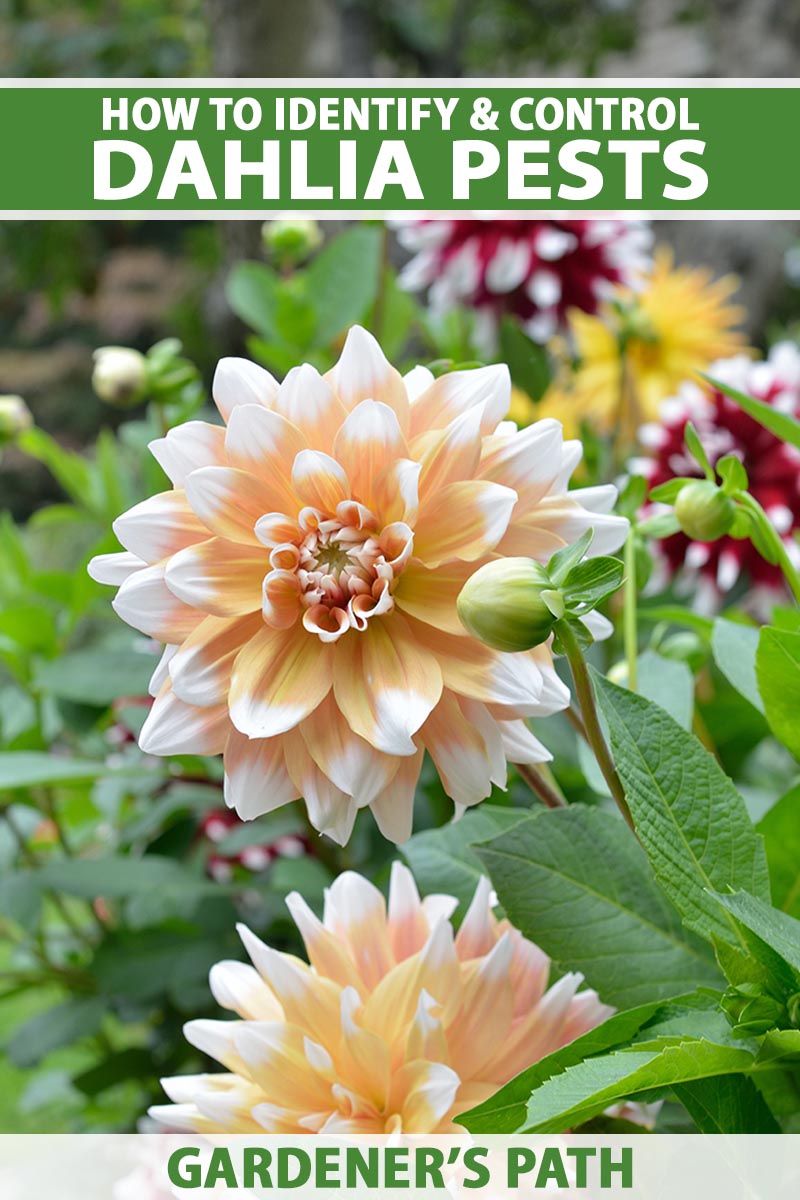
We link to vendors to help you find relevant products. If you buy from one of our links, we may earn a commission.
You’ll notice many of the topics covered below tackle full categories of insects rather than a specific species, and that’s because a wide variety of them are happy to make a snack out of these bold beauties.
Luckily, we’ve got everything you need to know about what pests might attack your dahlias right here, including how you can deal with them effectively!
Here’s what we’ll cover:
9 Common Dahlia Pests
1. Aphids
Aster root aphids, black bean aphids, foxglove aphids, green peach aphids, and melon aphids are all species that you’ll find pestering your dahlias. I wasn’t kidding when I said there was a wide variety of pests out there that may come to call…
If you grow plants of any kind, you already know aphids are pear-shaped, soft-bodied insects with two cornicles (like little tailpipes) and a range of colors, depending on the species and food source.
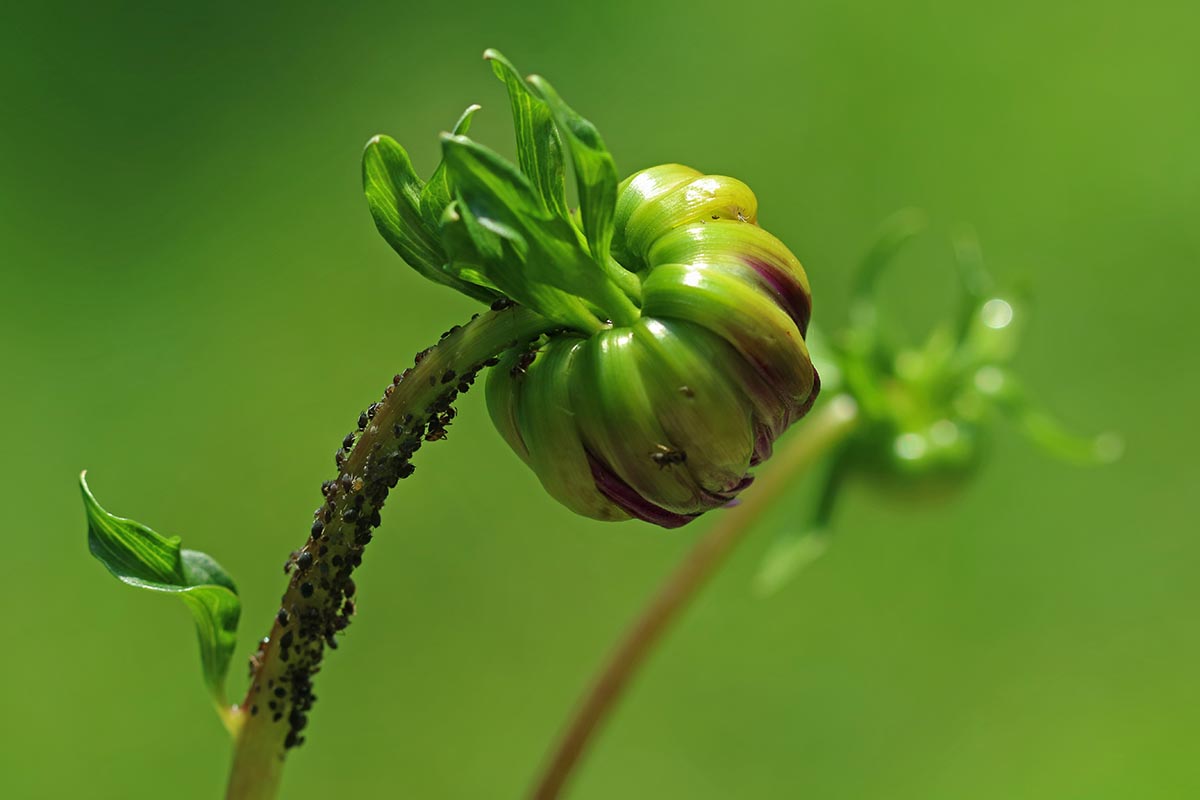
They seem to reproduce before your eyes, and the females are able to give birth to live young without mating first.
They might look slow and defenseless, but if populations grow in number, winged adults are produced to facilitate further spread, and ants will tend and protect them from predators in exchange for the honeydew they produce.
The damage they cause to your dahlias is mostly aesthetic. It may lead to plant weakening, leaf curling, and an ugly black sooty mold that grows on the honeydew exudates. These pests can transmit viruses as well.
Ladybugs, parasitic wasps, and lacewings will all attack aphids, so preserve these beneficial insects as much as possible by avoiding the use of chemical pesticides and providing a varied, nectar- and pollen-rich environment to attract and keep them near.
A strong stream of cold water can help wash aphids off the plants, and insecticidal soap or oil applications can be effective.
For insecticidal oils and soaps, good coverage and repeat applications are necessary. Get close and personal, spraying the offending insects well.
Try Bonide Insecticidal soap, available at Arbico Organics.
Learn more about aphids and how to manage them in our complete guide.
2. Caterpillars
A variety of caterpillars also love to snack on dahlias, leaving behind irregularly-shaped holes in leaves, large dollops of dark-colored frass, and depending on the type, webbing.
Their damage can kill or slow the growth of younger plants, and stunt or simply uglify older ones.
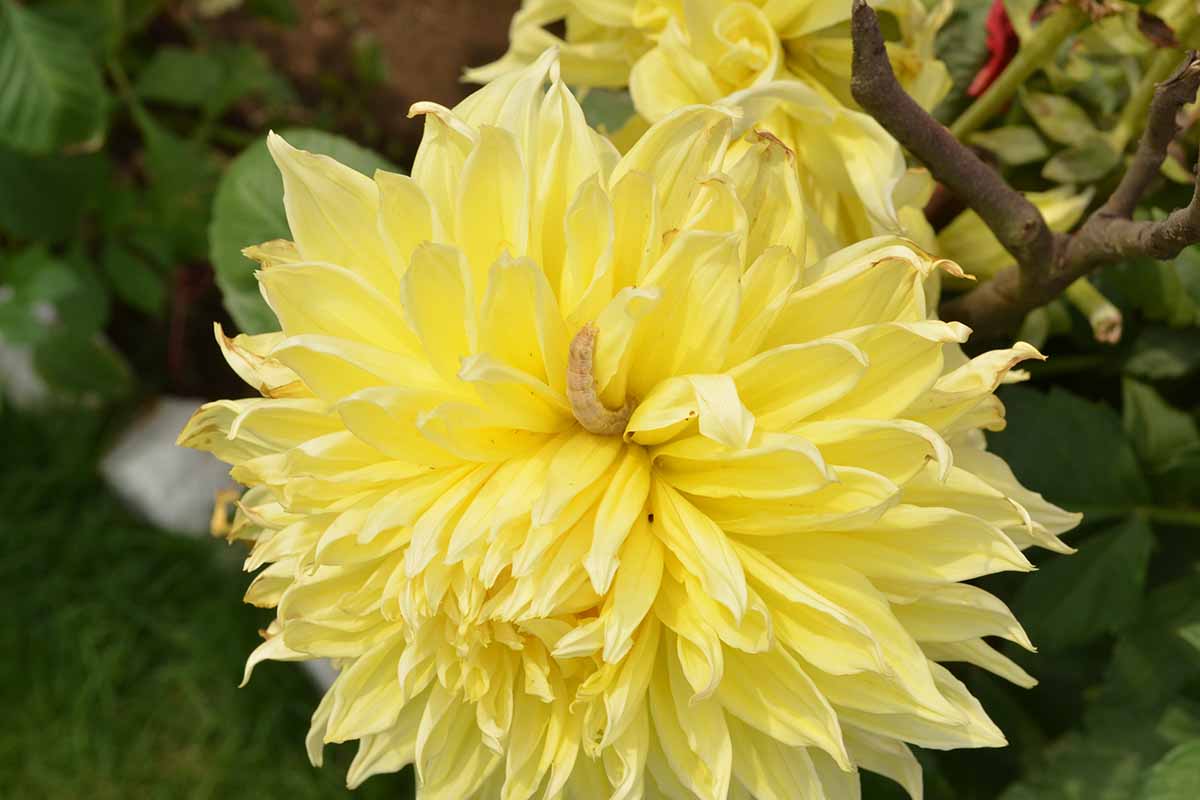
If you’re able to identify the pests, controlling weeds that the specific species of larvae as well as the adult insects like to feed and reproduce on is a good first step.
You can choose to handpick the butterfly or moth larvae, or apply a Bacillus thuringiensis product.
Bonide Thuricide, available at Arbico Organics, is specifically formulated to eradicate caterpillars.
It must be ingested in order to work, so apply it to affected plant surfaces and let the caterpillars come and eat it. Some leaves may be harmed in the process.
A spinosad product such as Monterey Garden Insect Spray, also available at Arbico Organics, can also do the trick.
3. Cyclamen Mites
We’ll talk about the more well-known spider mites a bit later, but if you thought they were small, cyclamen mites (Phytonemus pallidus) will surprise you.
The females are a quarter of the size of spider mites, and the males are half the size of the females. You need a microscope, or at least a 20x hand lens, to catch a glimpse of these pale yellow, pink, orange, or white thread-footed mites.

The damage they do to your dahlias, however, is not small. As they feed on plant juices, they inject their toxic saliva, which causes leaf curling, cupping, dwarfing, and thickening, plus you might see some bronzing and discoloration that’s typical of mite feeding.
The trouble is, the mites are so small they’re almost impossible to notice until after the damage is done.
Species of Amblyseius (syn. Neoseiulus) predatory mites will attack these mites, and multiple species are available for purchase to release in the garden.
A. andersoni mites are available from Arbico Organics in a variety of tubes, bottles, bags, sachets with hooks or sticks, and sachets in strips to suit your needs.
A. fallacis is available in packages of 500, 1,000, 5,000 from Arbico Organics.
Both of these species should be applied to plants before the pests become a big issue.
The good news is these two predator species are effective against spider mites as well, so you’re killing two pests with one living, mite-seeking stone!
Since cyclamen mites like to hide inside the thick, cupped foliage they created, they can be hard to control with pesticides.
You can try insecticidal soaps, but three to four applications with good coverage reapplied at three- to five-day intervals are necessary to see results.
4. Earwigs
We have an article dedicated to identifying and controlling these scary-looking insects if you’d like to give it a read, but the long and short of it is this:
These pincer-brandishing insects like to feed at night, surprising you in the morning with irregularly-shaped holes and edges chewed out of your dahlia leaves and flowers.
For some reason, whether it’s the sheer number of hiding spots available and the cool, dark shade they provide, or something else entirely, they really seem to love this flower.
The destruction they cause may look like caterpillar damage, but you won’t see any frass or webbing.
Since these insects like to hide out under boards, in vines, and under loose clumps of soil during the day, you can create a similar trap for them. Check it regularly, and dump the ones you find into a bucket of soapy water if you wish to kill them.
But remember – these insects can provide aphid- and other types of pest-gobbling services, so make sure you’re sure before doing so. They’re not all bad!
5. Leafhoppers
Leafhoppers are very mobile insects. In mottled shades of green, yellow, or brown, they barely reach three millimeters in length. Both the adults and nymphs bounce and shuffle quickly when spooked.
They can be difficult to spot, but the pale green or brown stipples they leave in their wake are not.
Besides the unsightly feeding damage, they also can transmit some nasty viruses.
Unfortunately, thanks to their active nature, they can be very hard to control. But luckily, many of the same predators that can help to control other pest insects such as aphids also target leafhoppers.
Assassin bugs are especially fond of chowing down on leafhoppers, and these can be purchased for release from Arbico Organics.
In a garden setting, these natural enemies are often enough help to keep leafhopper numbers to a minimum.
You can also try neem oil, applying it to the foliage to target the nymphs. Since these skittish little bugs live on any leaf surface, thorough coverage is imperative.
Pick up a pint-size bottle of concentrate or a ready-to-use spray from Arbico Organics.
6. Obscure Mealybugs
Pseudococcus viburni is a light gray to white-colored mealybug that’s covered in powdery white wax.
It has filaments along the edge of its body like other mealybugs, and two “tail” filaments that often cause it to be confused with long-tailed mealybugs (Pseudococcus longispinus).
You can tell the difference by observing the length of these, as obscure mealybugs’ tail filaments are not longer than their bodies, whereas those of the long-tailed mealybugs are.

These insects are unsightly, suck the vigor out of dahlias, and cover the plants with honeydew which grows sooty mold.
Predators such as ladybugs and parasitic wasps generally provide good control outdoors.
Manage ants, which like to protect them in exchange for a honeydew crop, and use a strong stream of water to wash these slow crawlers off of your plants.
Insecticidal soaps and horticultural oils can provide some control, but the waxy coating on these insects protects them well against pesticides.
Have a read of our guide to controlling mealybugs to learn more.
7. Slugs
Leaving slimy trails and irregular holes behind, these squishy, well-known pests are not actually insects, although the damage they cause to dahlias is often confused with insect damage.
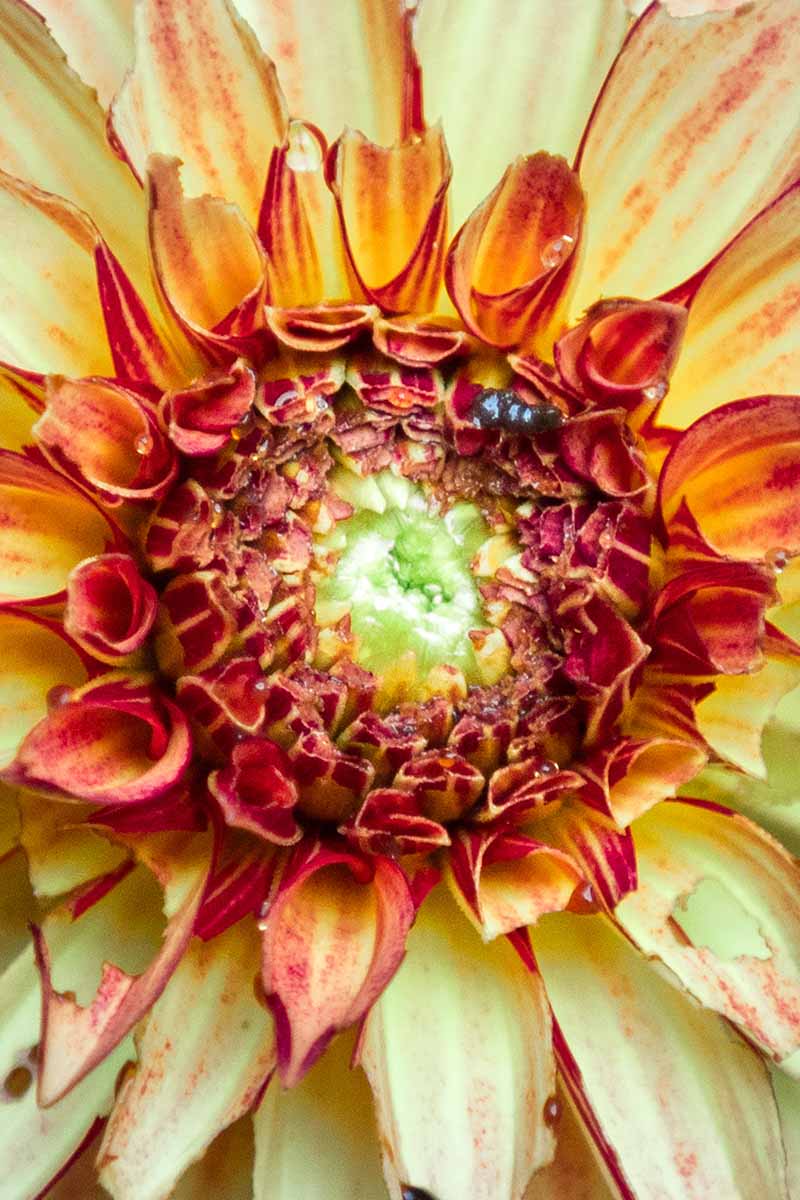
- Irrigate near sunrise so the plants dry off as fast as possible
- Use drip irrigation instead of sprinklers
- Handpick the slugs and drop them into soapy water
- Trap them under boards, flower pots, or inverted melon rinds and kill them
- Use molluscicides if necessary
Chickens and ducks are renowned slug predators, so let them loose on these pests, provided you don’t have plants growing nearby that the domesticated fowl would also like to snack on.
Just be mindful that your chickens and/or ducks don’t consume too many slugs. These pests can harbor parasites and toxic chemicals, so it’s important that your backyard fowl consume them in moderation.
8. Spider Mites
Spider mites, especially the two-spotted variety (Tetranychus urticae) seem to love ornamental plants, and dahlias are no exception.
These tiny, eight-legged moving dots feed on plant cell contents, leaving light-colored stipples and webs in their wake, and causing leaf bronzing and leaf drop.

They love hot weather, water-stressed plants, and dust, so keep your plants watered well, and wash the mites and any dust off the plants regularly with a stream of water.
Be sure to do this in the morning, to give plants time to dry, and only during periods of dry weather.
Using broad spectrum pesticides tends to increase populations since they knock back populations of predators like the Western predatory mites and other predatory mite species, six-spotted thrips, spider mite destroyer beetles, predatory gall midges, lacewings, and minute pirate bugs.
Instead, use insecticidal oil or soap if necessary. Bonide SUPER Soap, which combines Spinosad and insecticidal soap, is available at Arbico Organics.
Learn more about managing spider mites in our guide.
9. Thrips
There are several species of these tiny, bullet-shaped, fringed-winged insects that attack dahlias, including Western flower thrips (Frankliniella occidentalis) banded greenhouse thrips (Hercinothrips femoralis) and other types of greenhouse thrips (order Thysanoptera), but identifying the exact species present in your garden requires expert skills.

No matter, though, because they all suck cell contents and can transmit viruses, as well as causing damage in the form of stippling, discoloration, and silvering of the foliage.
Luckily, predatory thrips, green lacewings, minute pirate bugs, and parasitic wasps can all help you out by targeting thrips.
Spraying your affected dahlias with water once a day for three days straight and pruning away affected parts can be effective means of control.
Check back after a couple days to see if these methods helped put a damper on the infestation, or if you need to try something else.
If necessary, Spinosad offers translaminar activity – meaning it moves from one leaf surface to another – and can be very effective. Bonide SUPER Soap will also work to combat thrips. Other types of insecticidal soaps and horticultural oils may work as well.
Check out our guide to learn more about thrips.
Combating Dahlia Dilemmas
Phew! There’s quite a list of pests that affect dahlias, isn’t there?
Dahlias are worth the possible hassle, though. The bright, near-endless choice of colors and the rounded shape of the blooms just scream summer, and the blossoms beg to be added to cut flower arrangements.
You probably won’t have to deal with all of these pests. But it’s good to know what’s bugging your blooms when it happens!
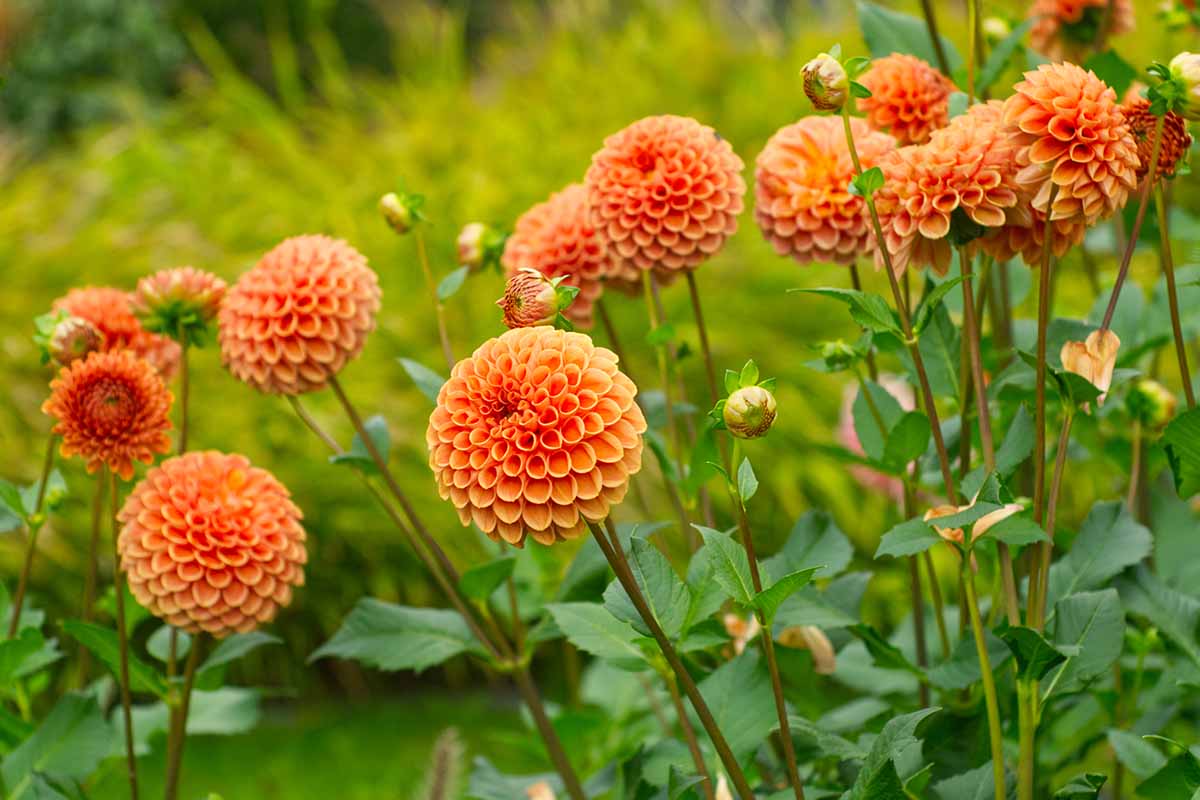
Have you ever had an insect problem on your dahlias? Tell us what it was and how you dealt with it in the comments below, and be sure to share your questions!
And once you’re done there, learn more about how to grow and care for dahlias here:

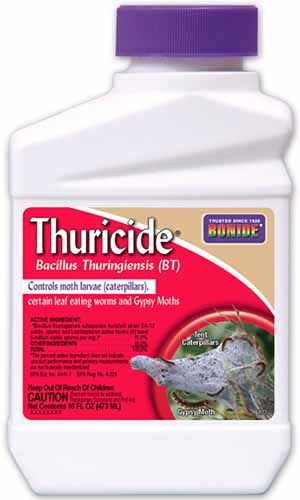
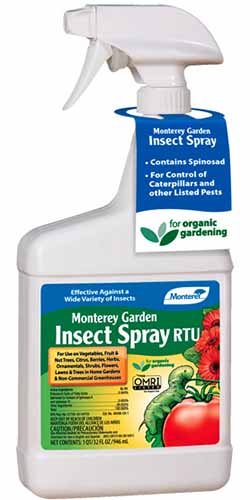
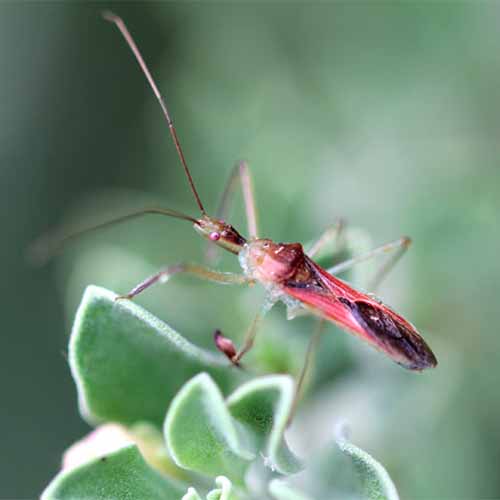
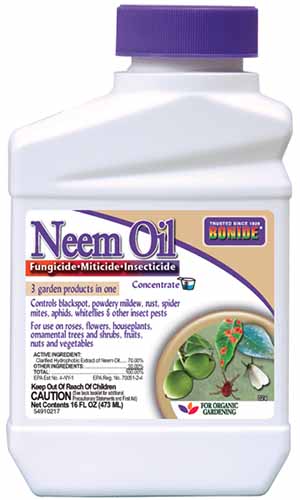
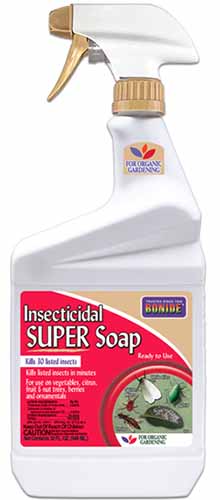
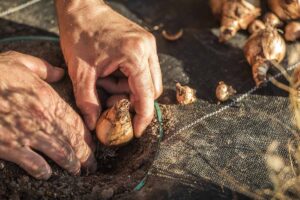
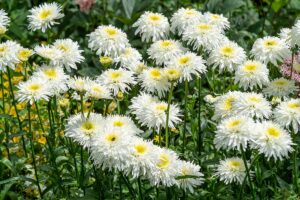
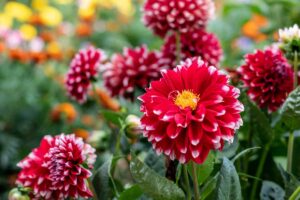
I’ve just had an attack of Spider Mites ????which I sprayed with white oil & then a few days later an insecticide. My leaves have turned yellow & black. How hard can I cut the plant back to get rid of all the damage. It’s late summer here in South Queensland Australia
Hi Mel, I’ve managed to retrieve your pictures, they uploaded but failed to attach! Sylvia will be along soon to take a look.
Hi Mel, oof spider mites are no fun! Did you manage to get most of them with those treatments? Based on the pictures it looks like one of the products burned the leaves a little (black areas)… maybe exposure to bright sunlight during or after treatment? If you are going to prune away some of the damage, be selective of the worst leaves and branches and leave as much foliage as possible. The spider mite damage (stippling and slightly yellow leaves) looks a little ugly but if you prune all that away you won’t be left with much foliage. Your… Read more »
What chews the leaves off dahlias but doesn’t eat them? These are in a netted/caged bed so not birds, as they can’t get in.
Hi Pearl, from the photos, it looks like the plant is being cut off at the base. Is that right? If so, this is likely the work of cutworms. They’ll chew through young shoots near the ground. They will also sometimes feed on the foliage, which I can see evidence of in the photos, as well.
Learn about identifying and dealing with these pests in this guide.
My dahlias have been completely wiped out. The foliage is completely destroyed. HELP. The plants I gave away are doing fine.
Sorry to hear it! Can you describe the problem in more detail or send photos? What seems to be the problem in your garden vs. the ones you gave away?
I just discovered the early shoots of my Dalias have dissapeared overnight, there is little stumps cut straight, I’m do sad as it was a beautiful plant last year. What did I do wrong, what killed the shoots
Hi Mariana, it could be something like cutworms or herbivores like rabbits or deer. If the top of the plant is still there, just lying dead on the ground, it’s cutworms. If it’s gone entirely, it’s likely an herbivore having a snack. The plants might come back and you’ll get a smaller late bloom. Next year, try caging your plants.